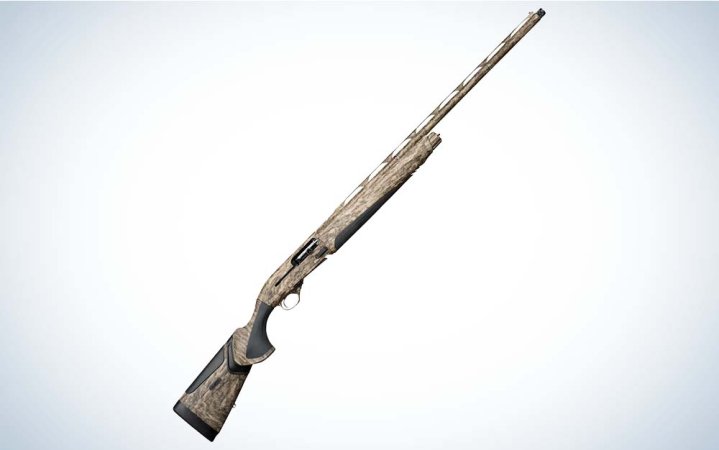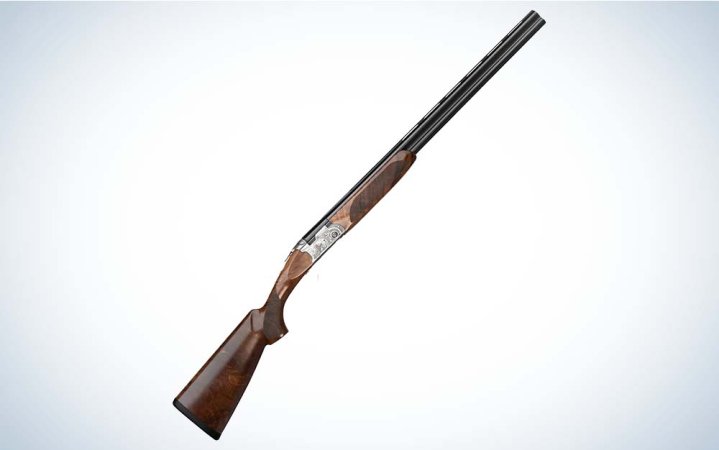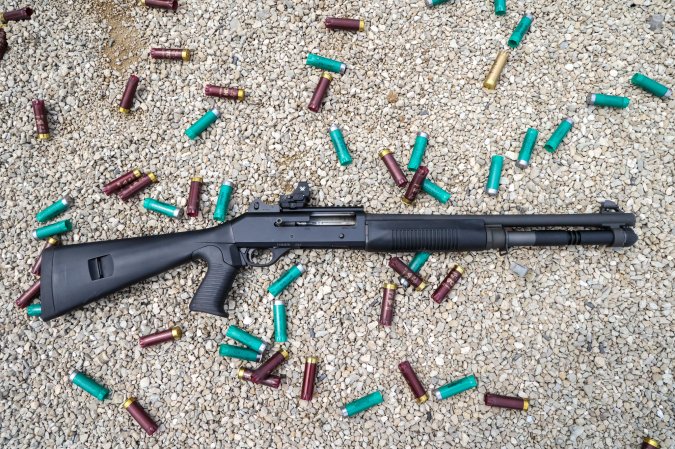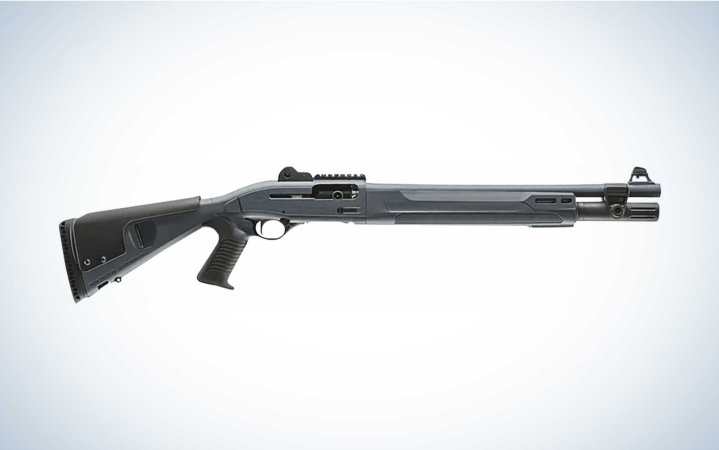We may earn revenue from the products available on this page and participate in affiliate programs. Learn More ›
When it comes to shotguns, there’s probably no more hotly contested debate than Benelli vs. Beretta. Both smoothbore camps are well entrenched, firm believers that the brand they shoot is better than the other. Some think that an inertia-driven shotgun is better than gas operation and vice-versa. However, it’s not that cut-and-dry. There are benefits and drawbacks to both operating systems and the way each gunmaker builds its shotguns.
Benelli and Beretta also excel in their own shotgun niches. Sure, they crossover, mostly in waterfowl—the Super Black Eagle 3 and A400 Xtreme Plus are two of the most advanced, high-functioning auto-loading shotguns in the world—which is where the majority of this debate is rooted. But in many other areas of shooting sports it’s pretty clear that one manufacturer has the edge — even when both shotgunmakers build a smoothbore for that specific purpose.
The point being, Benelli does certain things well, and so does Beretta, which makes blind brand loyalty rather silly. Plus, Beretta Holding owns both Beretta and Benelli, so no matter what brand you choose, your money is ultimately going to the same place.
If you only shoot Benelli or only shoot Beretta, you’re leaving a lot of gun on the table and potentially missing out on the benefits of a proven platform. Here’s why.
Gas vs. Inertia: The Pros and Cons

Pros and Cons of Inertia-Driven Actions
Most every Benelli semi-auto shotgun is inertia-operated—the M4 uses a gas system called ARGO, which I’ll get to later—which means the guns use recoil to function. When you pull the trigger, the entire shotgun moves backward but the two-piece bolt stays in place, compressing a spring inside the bolt and briefly locking the action. As recoil dissipates, the spring expands and opens the bolt so the fired shell can eject. An action spring returns the bolt forward, the carrier lifts the next round from the magazine. The shell is loaded into the chamber as the bolt slams home.
Inertia guns are simple to breakdown and clean. They don’t get as dirty because inertia guns don’t need to bleed off gas to function. That allows a Benelli to run longer between cleanings (though you should keep it as clean as possible). I talked to a Benelli gunsmith who did not like that the guns had become known as workhorses that never needed a field strip and wipe down. They do, just not as often as a Beretta.
Inertia guns are typically light and sleek in comparison to gas guns because they don’t house a piston or sleeve with a connective rod inside the fore-end to work the action. This makes them much more enjoyable to carry afield, and they feel good in the hand. I liken hunting with a Benelli to shooting a really long No. 2 pencil—they are that trim. For example, the Beretta A400 is a 7.8-pound gun versus the SBE3, which weighs only 7.2 pounds. That may not seem like a big difference but trust me you will feel every ounce when you’re making a long walk down a public levee. On the flip side, recoil is also more stout in inertia guns due to their lightweight and the operating system.
Also, Benellis use a rotating bolt head which can cause the gun to not fire if the bolt is not slammed all the way into battery. This is an issue that all recoil-operated shotguns must contend with.
The Benefits of Gas-Operated Actions
Almost all Beretta semi-autos are gas-operated. When you pull the trigger of a Beretta gas gun, the expanding gasses from the shotshell’s powder send the payload down the barrel. The action is driven by the gas bleed off through a system of ports located near the fore-end of a shotgun. Gasses push against a piston, typically housed near the end of the magazine tube, which drives back a sleeve with a rod connected to the action. The bolt opens and the fired shell is ejected. A return spring—just like in the inertia guns—sends the bolt forward, the lifter presents another shotshell, and the bolt sends it into the chamber.
Gas guns are understood to be slightly more versatile than inertia autos because they can cycle just about any shot charge. Inertia 12-gauge guns can struggle to reliably cycle anything less than a 1 1/8-ounce payload, though I have shot Benellis that had no issue with a 1-ounce shotshell.
More importantly, because Berettas are often heavier and use gas to function, they do not produce as much recoil. This makes a big difference when shooting lots of clay targets or when running through many rounds of heavy duck loads. Afterall, shotgun recoil affects us all.
However, there are tradeoffs when you’re shooting a light-kicking gas gun. The first issue is that they are heavier and have larger—some will say clunky—fore-ends because the piston is housed there. So, Beretta autos often are not as enjoyable to carry afield. Gas guns also get dirty much faster and require more cleanings to operate reliably because they use the propellant gasses from the shotshell to run the action. Breaking down a Beretta is also more of a chore than a Benelli because gas guns have more parts.
Benelli vs. Beretta: The Waterfowl Gun Debate

In duck hunting you’re either with Benelli or Beretta, very few shoot both. Being a gun writer, I have used both brands extensively and hunt with a wide variety of folks who shoot one or the other. And full disclosure, my favorite auto-loader is a Beretta A390 Silver Mallard, but the SBE2 and SBE3 left-hand models are close seconds.
The main reason a duck hunter chooses a Benelli auto is because of the operating system. They are promoted to be almost as reliable as a pump. But these guns can malfunction just like any other shotgun. Cold stiffens the rotating bolt so it doesn’t always send the shotshell into battery. As hunters get older, I see many of them switching to gas guns because they are done with heavy recoil.

Duck hunters who love Berettas do so because there are so many more options. Benelli has the SBE, M2 and Vinci—all of which cost over $1,200—but that’s about it for dedicated waterfowl autos. Beretta has a host of old guns that are no longer in production that can be had for $500 to $1,000 on the used market, plus the new A300 Ultima costs around $800. That’s a big deal these days when you must shell out up to $2,000 for a new Beretta or Benelli. My A390 cost $550 and I would bet my son will be able to shoot it long after I’m gone. Berettas also fit so many shooters well. The old A300 series guns (301, 302, 303, and 390) are legendary for that. And since Berettas are gas-driven, they are much easier on your shoulder.
The knock against some Beretta shotguns is they don’t always cycle. I haven’t experienced that much, but when I have, it’s been a cleaning issue (with one exception I will get to next). I understand there is some merit to not wanting to clean your auto-loader, but if you shoot a Beretta, it is a requirement. Gas gums up bolts, springs, and firing pins, there’s no way around it.
When the A400 Xtreme debuted, some of the guns had trouble cycling shotshells reliably. I shot a few different ones and only had a couple hang ups. But a few of my hunting buddies owned an A400 and had some trouble with them, mostly shooting 3½-inch loads, but 3-inch shotshells were sometimes problematic as well. The newer A400 Xtreme Plus has had no such issues that I am aware of and has proven itself to be an excellent auto-loader.

Myself, editor-in-chief Alex Robison, and two editors from Field & Stream patterned, shot sporting clays, and hunted teal with the gun extensively during our test of the best shotguns for duck hunting in Texas. We picked the Beretta A400 Xtreme plus as our editor’s choice—it narrowly edged the benelli SBE3—because it was softer shooting and more accurate.
Beretta Break-Action Shotguns

Beretta specializes in side-by-sides and over/unders. In the 1930s—almost 40 years before Benelli was founded—Beretta started importing break-actions to the States to compete with John Browning’s Superposed. And the Italians have certainly made their mark. In 1956, Liano Rosini, an Italian trap shooter, won the first Olympic gold medal in clay pigeon shooting. It started a trend that continues today—Beretta shotguns have won more international competitions than any other brand. Two of the most celebrated American clay shooters—Kim Rhode (six-time Olympic medalist) and Vincent Hancock (three Olympic golds in skeet)—shoot Berettas. Even a skeet shooter named Benelli (Andrea Benelli) won gold in the 2004 Sydney Games with a Beretta in his hands.
Also consider that break-actions, like Beretta’s DT, Paralello, SO, and Silver Pigeon series are some of the best competition and field guns in the world (with price tags to match). Through the Beretta Gallery, customers can have many of these models custom fit to their body type and shooting style. Beretta also employs some of the top engravers in the industry, and they will spend hundreds of hours detailing the action of your shotgun should you have the funding to afford such a smoothbore.
Benelli vs Beretta: Tactical Shotguns
Both Benelli and Beretta have high-end tactical shotguns that performed well in our test of the best shotguns for home defense.
Benelli M4
Since 1999 the U.S. Marines have employed Benelli’s M4 tactical shotgun, which is also available for civilian use. Unlike every other Benelli, the M4 operates on the ARGO (Auto-Regulating Gas-Operated) system. It’s a much cleaner gas system, and you pay for that technology (M4s cost up to $2,300).
The reliability of the M4 is one of its best-known qualities. And just as advertised our test sample ran flawlessly. In our range testing, it had no malfunctions of any type, whether running light target loads or defensive slugs.
Beretta 1301 Mod 2
This tricked out tactical shotgun won the editor’s choice award in our 2024 shotgun test. As shooting editor John B. Snow wrote: “This iteration of the 1301 sets a new highwater mark for the category. Thanks to its excellent trigger, ergonomic safety, and superlative gas-operated action, the Beretta 1301 Mod 2 is by far the fastest shotgun we evaluated. The clean trigger break and short trigger reset, along with the speed and reliability of the action, lets the shooter run shells through it at a break-neck clip while retaining control. This is true whether we were firing light target loads or defensive slug and buckshot rounds.”

Our model included a sweet folding stock from Chisel Machining, a mounting plate for an optic, a ghost ring sight, lots of pic rail, and a Matchsaver Z bracket. In short, it was everything you’d want in a tactical shotgun.
Benelli vs Beretta: Turkey Guns

Benelli specializes in turkey guns with its Performance Shop SBE3 and M2, partnering with gunsmith Rob Roberts, Burris, and Federal Premium ammunition. Roberts lengthens the forcing cones and outfits these guns with a custom turkey choke. The Benellis are pattern-tested with Federal ammo and computer printouts are provided to show point of impact inside a 10-, 20-, and 30-inch circle. A Burris FastFire red-dot is also included so hunters can make more precise shots. I patterned over 100 turkey loads through and hunted with the SBE3 trim this spring. Once the Benelli was sighted in, it made acquiring a longbeard’s head and pulling the trigger much easier. And I ended up needing the accuracy of that red-dot because I shot a Merriam’s at 50 yards when I thought the tom was much closer.
Beretta also has a turkey-specific shotgun which is essentially a shortened A300 Ultima with a bit of pic rail attached to the receiver. The A300 Ultima Turkey has a 24-inch barrel and comes in two different camo patterns Mossy Oak DNA and Realtree Edge. But the key feature here is that this turkey rig includes Beretta’s Kick-off system. This recoil reduction system combined with the gun’s gas operation will take some of the bite out of 12-gauge magnum turkey loads. And that’s something that all turkey hunters will appreciate.
Read Next: The Evolution of Shotgun Coatings: From Blued Barrels to (Mostly) Impervious Firearm Finishes
Final Thoughts on Benelli vs Beretta

Deciding between a Benelli vs Beretta has far more to do with what you are looking for in shotgun than brand loyalty. For duck hunters, if you choose a Benelli, you’re getting a workhorse auto-loader you don’t have to clean as much as a Beretta. But, it also produces more recoil. Pick a Beretta, and you’ll be killing mallards with a soft-shooting semi-auto that has the same reliability as a Benelli if you keep it clean. Clay shooters and upland hunters are likely going to lean more towards a Beretta and core turkey hunters and tactical shooters will almost certainly choose a Benelli.
Even though they are competitors, the two Italian gunmakers actually complement one another. Beretta fills niches Benelli does not, and vice-versa. And since they are owned by the same company it makes perfect sense that their guns operate using two different platforms—to give shooters more options—and that each brand excels in different categories, which is why they remain two of the most popular shotgun brands.






